Want to know how to get into gap trading?
Contents
I’m listing my 11 easiest gap trading strategies for you to try out. Gap trading suits every trading style, from day trading to options trading.
If you don’t know what gaps are yet, first get my complimentary guide, The Gap Method. Read it all the way through before you read the gap trading strategies below.
1. Day Trading
Day trading gaps is possible, profitable, and easy. Almost every stock opens at a different price than it closes. If you “Bet in the direction of the gap filling” every day, you will be right nearly 100% of the time.
If a stock opens higher than it closed yesterday, short the stock. If it opens lower, buy the stock. Close your position as soon as the gap is filled.
Pro: Almost always right
Con: Need a large amount of money to get started
2. Options Trading
Options trading can be complex because of the vast amount of options trading strategies. Besides the simple call and put options, which allow you 100 times the leverage of a stock without the price, you have methods to generate immediate income, profit from time, and even profit by guessing a stock’s trading region on a specific date. Most options traders start with simple calls, getting as much as 100 times the profit that the stock buyer gets, but you might consider other options trading strategies.
Overall, with options trading, you have many options (pun intended). Thus, for options trading on gaps, I’m going to lay out the major options strategies available to you. Read the following for a list of strategies useful in options trading.
3. Credit Spread
In a credit spread, you sell one option and buy another, cheaper, option. In this way, you’re making cash with the sold option and protecting yourself against loss on the bought option. For gaps, it’s best to play this on breakaway gaps that look like they will continue away from the gap.
Pros: Instant income, protection against risk, you don’t have to be right to profit
Cons: You need lots of margin for the most profitable credit spreads
4. Debit Spread
A debit spread is like a credit spread but backwards. For a debit spread, you buy the more expensive option and sell a less expensive option. The bought option increases in value as the stock goes in the direction you want; the sold option protects you against time decay.
When you play a debit spread on gaps, you should usually aim for area gaps, as you’ll know your price target with an area gap. Place the sold option at your price target. Buy the other option at-the-money or in-the-money.
Pros: Profitable and protection against time decay
Cons: Your profit is limited to the difference in the strike prices, times 100 (e.g., for a 21 and 30 debit spread, you can only make $900 max, no matter how high the stock goes).
5. Iron butterfly
An iron butterfly is playing two credit spreads at the same time, with the sold call and sold put having the same strike price. You get the benefit of both credit spreads. You should only use an iron butterfly when you believe the stock will stay at or around the current price.
When you play an iron butterfly after a gap, you’re getting more money than you’d get if you hadn’t played it after a gap. The reason is that gaps increase the volatility of the stock, and the iron butterfly’s price is attached to the volatility. Generally, you want to play an iron butterfly after a breakaway gap that you think will level out.
Pros: Lots of income (around double that of the credit spread)
Con: You have to be very sure of the stability of the stock to choose the correct strike price for the sold options.
6. Iron Condor
The iron condor works much like the iron butterfly: You’re playing two credit spreads at once. However, the sold options don’t have the same strike price – there is some space between the strike prices. As long as the stock is between those two strike prices when the options expire, you can keep all of the income obtained from playing the iron condor.
For gaps, you should, like the iron butterfly, focus on breakaway gaps that you believe will stabilize. Determine the area that the stock will stabilize at, and sell the options at the strike prices that determine that area’s range. For example, if a stock gapped up to $44, and you think it will stay between $43 and $45, sell a call at 45 and a put at 43.
Pros: Almost as profitable as the iron butterfly, but you don’t need to be so precise in your predictions.
Cons: Less profit than the iron butterfly and requires the most margin of all options plays.
7. Calendar Spread
The calendar spread is another “sideways” options strategy that allows you to profit when a stock stabilizes. For a calendar spread, you use two options (calls or puts, it usually doesn’t matter). The options are identical except for two things: the expiration date and whether you’re buying or selling.
Again, for sideways strategies such as the calendar spread, you want to play them on breakaway gaps that will stabilize. If the stock is trading at $44, and you think it will stay at $44, sell a put at $44 and buy a put at $44, with the bought put having a later expiration date. In this way, you benefit from the time decay and have the ability to “pivot” by buying back the sold option, turning your play into a pure call or put.
Pros: Profit from time, no need for margin, super cheap, and the ability to pivot
Cons: Profit margins tend to be small
8. Penny Stocks
Trading penny stocks on gaps is a good idea, as long as the gap implies the stock will be bullish. Penny stocks can bring in profit margins that few blue-chip stocks can. And when you play them on gaps, you’re taking a lot of the guesswork out of which penny stocks to pick.
The best gap to play penny stocks on is the upward continuation gap. Continuation gaps indicate good news for the stock, which should drive the stock further up as investors catch on. Because continuation gaps rarely happen on penny stocks that don’t have true potential as a company, they are also good indications for investors as to which penny stocks are suitable for a “buy-and-hold” strategy.
Pros: Potential for huge profits and cheap to buy
Cons: The pump-and-dump phenomenon can make you lose your gains as quickly as you got them
Main Types of Gaps
9. Area Gaps
The area gap occurs on a small volume and within the standard trading region. Typically, area gaps don’t mean anything newsworthy and are just due to noise in the market. However, you can still profit from area gaps if you know that most area gaps fill.
To play an area gap, bet in the direction of the gap closing. So for an up gap, short the stock or buy a put option (or debit spread as above). For a down gap, buy the stock or buy a call option.
Pros: Predictable and safe
Cons: Potential for profit tends to be limited to the size of the gap (e.g., a gap from $7 to $9 only give you about $2 profit per share)
10. Breakaway Gaps
The breakaway gap occurs when a stock “jumps” (or falls) far away from its standard trading region. It is almost always accompanies with a statistically significant increase in volume. The breakaway gap tends to be in response to some news event, such as an earnings report or a change in the company structure (e.g., firing of the CEO).
To play a breakaway gap, you should first analyze the candlesticks after the gap to ensure that the gap will widen (the direction in moved has momentum behind it). In this way, you can make a bet in that direction. If you see the candlesticks after the gap as being stable, this is the best time to play a sideways options strategy, such as the calendar spread.
Pros: Huge profit potential
Cons: If you misjudge a breakaway gap, you could lose a lot
11. Continuation Gaps
Continuation gaps are much like breakaway gaps. In fact, they are the same barring the fact that for a continuation gap, the trend prior to the “breakaway” was already in the direction of that breakaway. You could say that an (up/down) continuation gap is a (good/bad) news event for an already (strong/weak) stock.
Play up continuation gaps on low-cost stocks, such as penny stocks. Play down continuation gaps on high-priced stocks that are doomed to fail (e.g., Blackberry after iPhone came out). You might want to use options strategies to limit your risks.
Pros and cons: Same as for breakaway gaps
Click Here for More on Trading Gaps
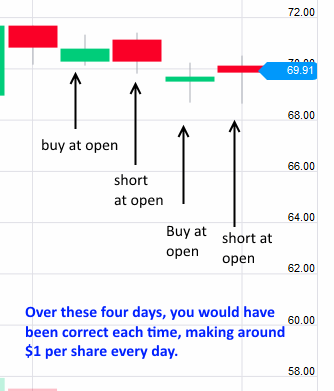
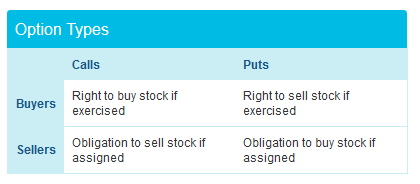
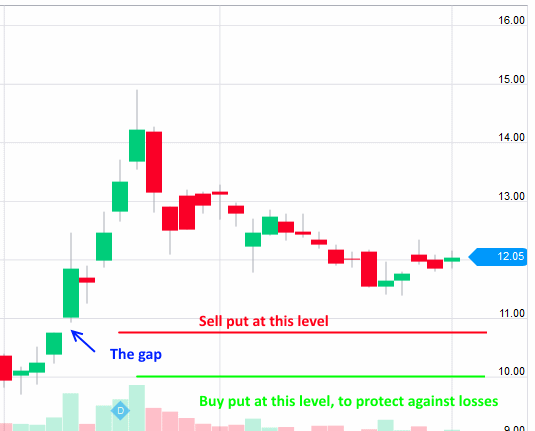

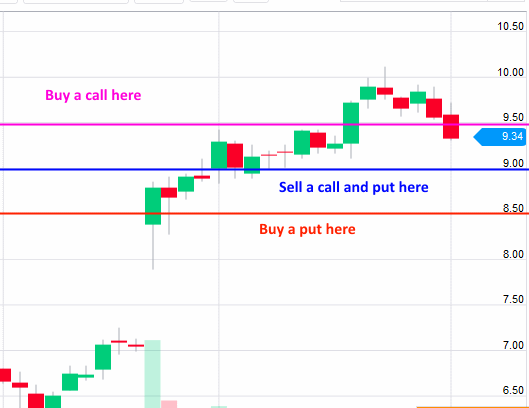

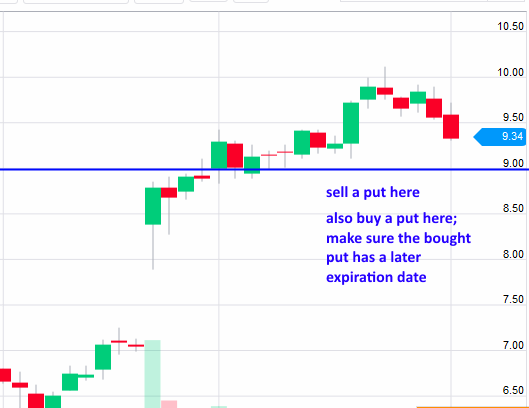

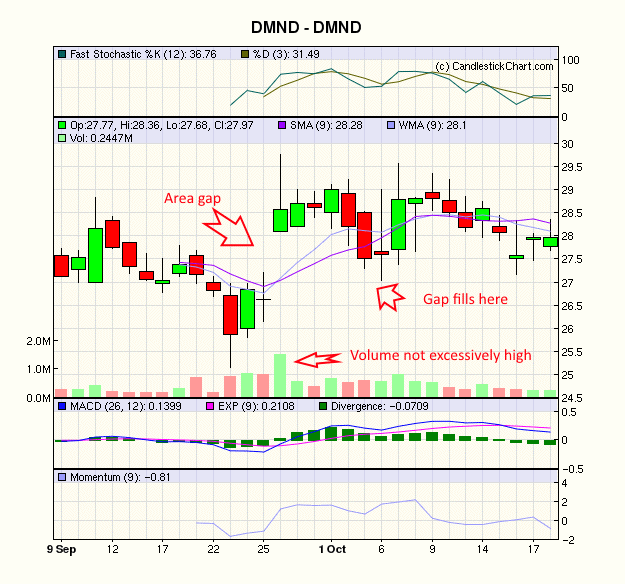
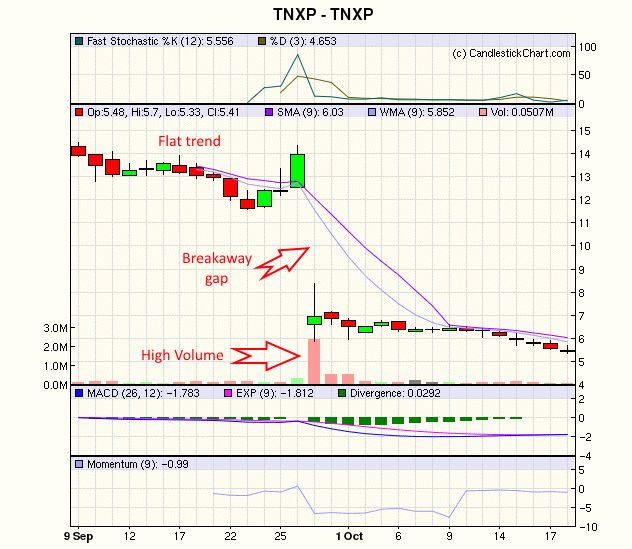
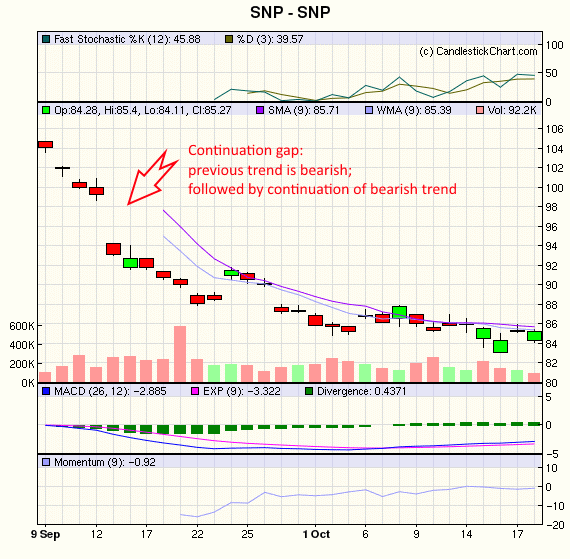
No Comment